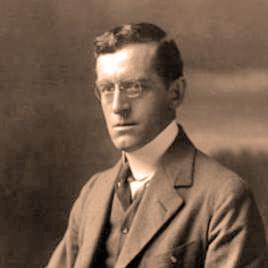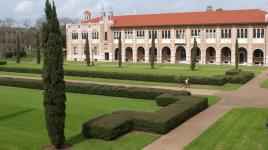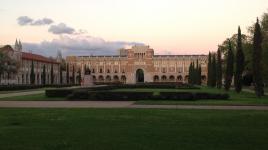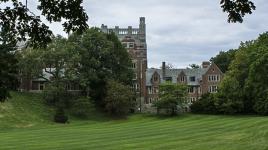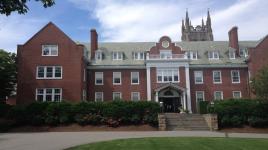Pioneer Information
Born in Hampton Falls, New Hampshire, Cram studied architecture as an apprentice for five years in the office of Rotch and Tilden in Boston. In 1889, he established an architectural firm (Cram & Wentworth) with Charles Francis Wentworth in Boston, where he practiced with a series of partners, including Bertram Goodhue (Cram, Wentworth & Goodhue) and F.W. Ferguson (Cram, Goodhue & Ferguson). Cram’s important achievements include the buildings of the United States Military Academy at West Point and the Gothic transformation of the Cathedral of St. John the Divine in New York City.
From 1907 to 1929, Cram served as consulting architect at Princeton University, where he created a master plan for the campus. He developed a Beaux-Arts-inspired master plan for Rice University in 1910 and worked with Arthur Shurcliff and Frederick Law Olmsted, Jr., on a master plan for Wellesley College in 1921. In 1928, he designed the Gothic Revival Church of St. George at St. George’s School in Rhode Island, and produced a Beaux-Arts plan for Bryn Mawr College in 1933, which was, however, slowly abandoned. From 1914 to 1921, Cram taught architecture at the Massachusetts Institute of Technology. A prolific writer, he produced many scholarly works on aesthetics and architecture, including the books Church Building (1901) and The Substance of Gothic (1917). He was a member of the National Institute of Arts and Letters and was a Fellow of the North British Academy of Art, the Royal Geographical Society, the American Academy of Arts and Sciences, and the American Institute of Architects. Cram retired in 1930, but maintained his firm in Boston until his death. Now known as Cram & Ferguson, the firm continues to operate in Concord, Massachusetts.




